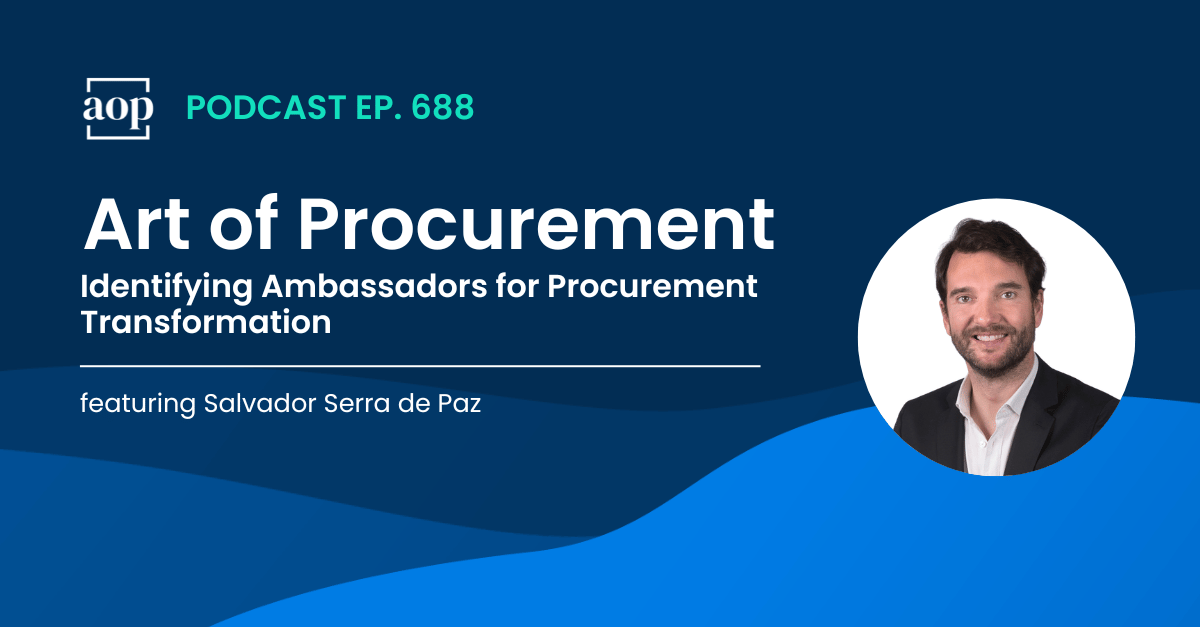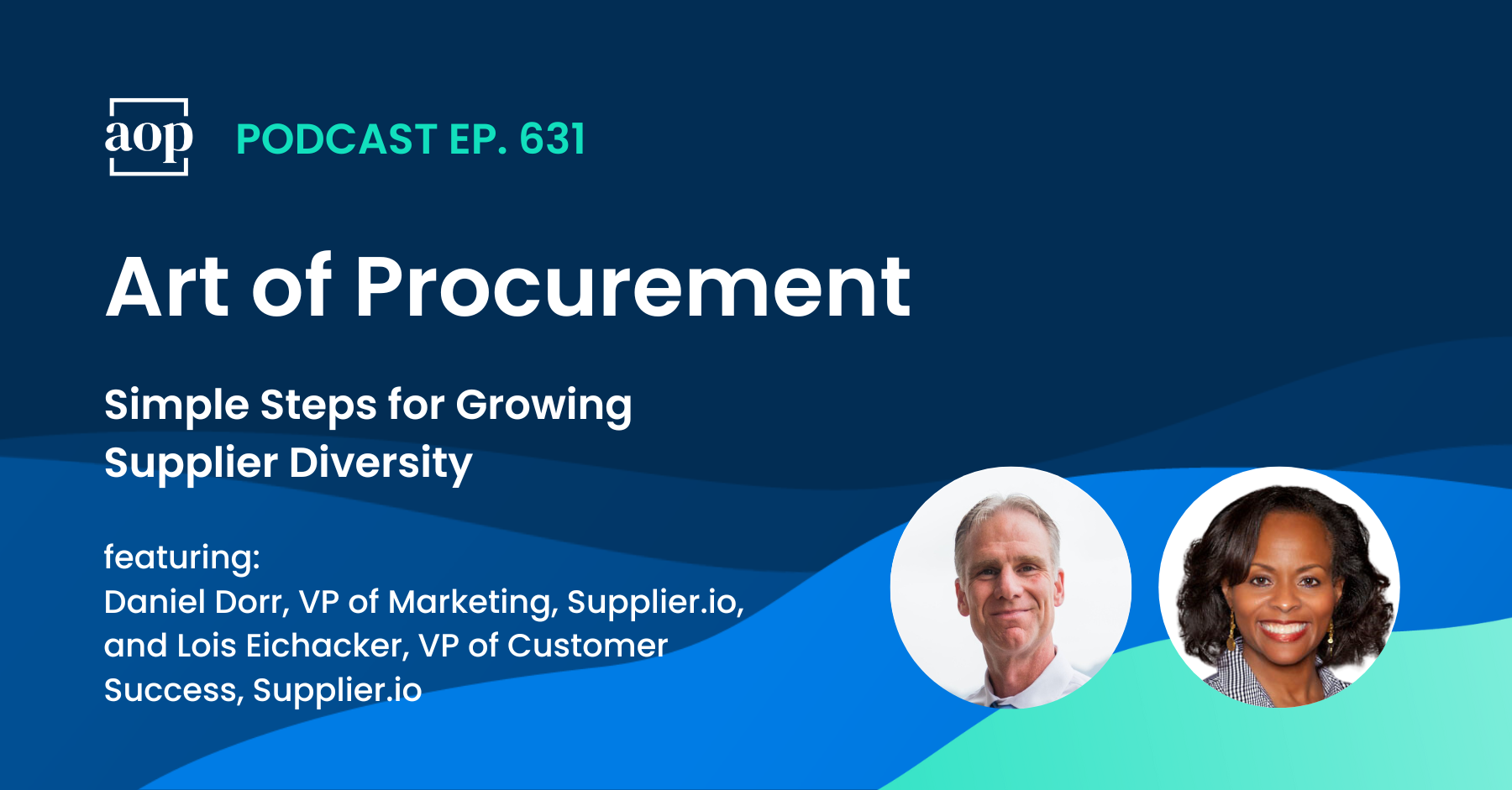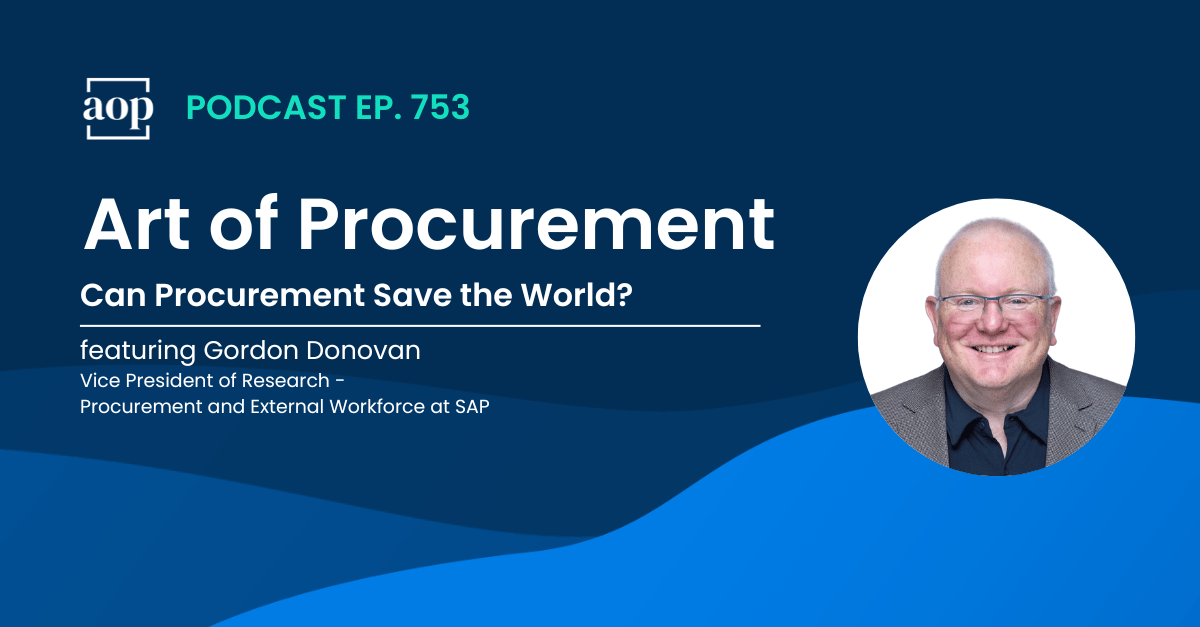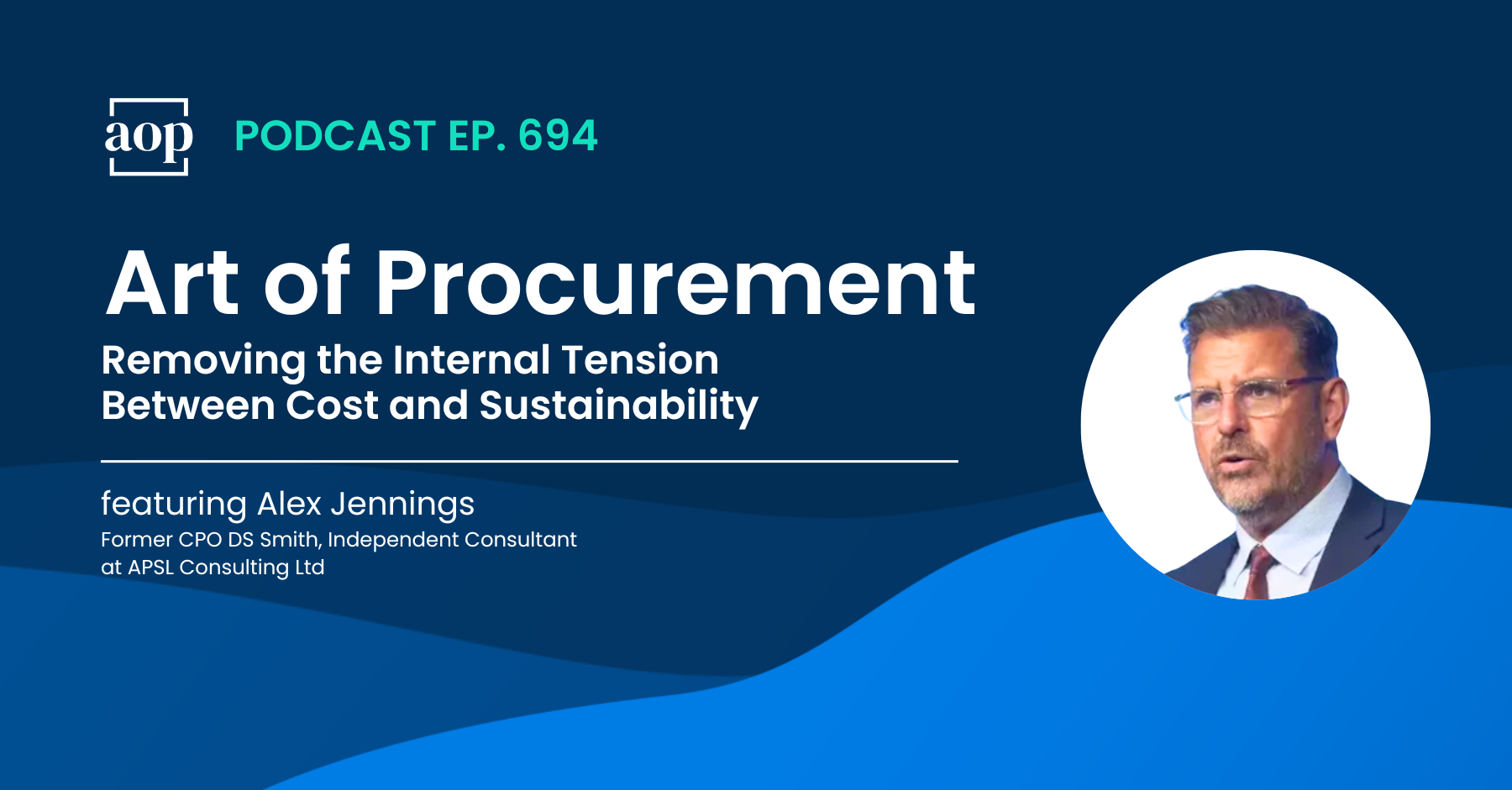
“What we have to do from day one is engage the business, sell the value of procurement, communicate the value of procurement, and make quick wins with the suppliers.” – Salvador Serra de Paz
When you’re kicking off a procurement transformation project – or, any transformation project for that matter – there will always be internal stakeholders who express hesitancy, and sometimes downright resistance, to changes in processes, workflows, approaches, or ownership. If you’re lucky, their numbers are small, but even then, procurement leaders still have to find ways to address the naysayers and minimize the infectious spread of doubt and hostility so it doesn’t undermine the entire project.
I recently welcomed Salvador Serra de Paz onto the AOP podcast to tap into the long history he has leading successful procurement transformations in a variety of different industries, countries, categories, and settings.
It seems like Salvador has seen it all when it comes to transformation projects, and he explains that, although procurement will most likely not be able to overcome every single objection to the transformation project, there is still plenty they can do to reduce its impact on the overall outcomes and leverage instead those supportive partners who can help create lasting, value-creating change.
Identify procurement’s ‘super fans’
Yes, trying to win over the reluctant crowd can prove useful, but, says Salvador, it’s much more beneficial for procurement if they focus their efforts on identifying, nurturing, and leveraging the influence of their supporters.
“You need to identify the early movers, the early adopters, and you need to get them on board and use them as internal ambassadors,” said Salvador. “In the end, it’s always impossible that everybody will love you … but you don’t need to be discouraged because there’s always a bunch of people willing to support procurement.”
It’s up to procurement, then, to find those supportive colleagues, which can sometimes take a little more time, effort, and relationship-building than you might think.
When you’re looking to identify the stakeholders and colleagues you can leverage throughout transformation, Salvador suggests getting to know and understand their position within the business and their relationship with procurement. By approaching them with genuine curiosity and authenticity about their pain points and goals, you can then understand just how valuable procurement can be to them. Once that’s clear, it’s just a matter of communicating that story to the rest of the business to help drive change.
Questions lead to answers
At the start of a transformation project, said Salvador, “I talk to people. I invest weeks first getting to understand the internal networks and internal relationship scheme works, and I talk to as many people as I can to identify who is more open to change and who are those early adopters.”
Salvador says that in those initial talks as he’s looking for support for procurement, he asks questions like:
- What are your day-to-day challenges?
- What are the benefits that you expect from a procurement organization?
- Is there anything procurement can be doing differently to support you, or is there something that you’re missing from a procurement function that hasn’t been done in the past?
- How does procurement impact your value offering to the customers?
“If you let them speak,” says Salvador, “you get a lot of useful information out of it, you can identify which pain points they have, and then you can have your answers ready to demonstrate how procurement is going to bring value.”
Let go of the 10%
The numbers are different for every organization, of course, but Salvador is right when he says “you also need to be aware that procurement will never be loved by everybody,” especially during a transformation. “There will always be 10% of your stakeholders who are not going to like you, and whatever you do, they’re not going to support you.”
To successfully implement a transformation, procurement has to let go of the expectation of getting 100 percent support from 100 percent of the organization 100 percent of the time. But, once you’re able to pinpoint and rally those internal ambassadors around procurement’s mission and value, they’ll likely stay engaged with procurement and, in turn, evangelize your internal brand throughout (and even outside of) the business.
“Your ambassadors will always want to talk to you and ask questions about what procurement is doing,” said Salvador. “And if you’re able to get these ambassadors spread out throughout the organization, they will be the best marketing team you could ever get.”
Subscribe to Art of Procurement
Apple | Stitcher | iHeart Radio | Email




